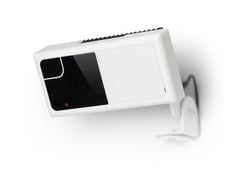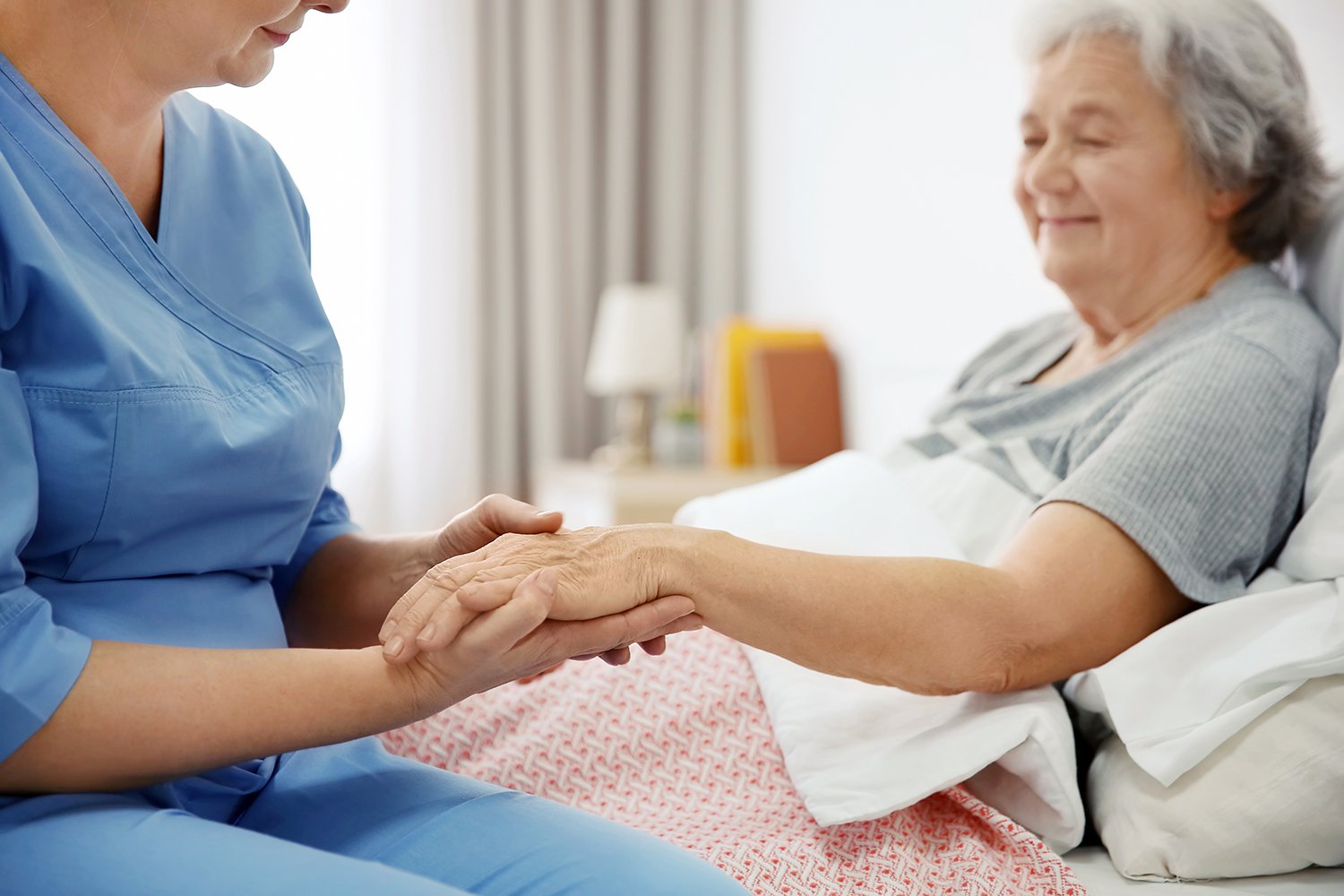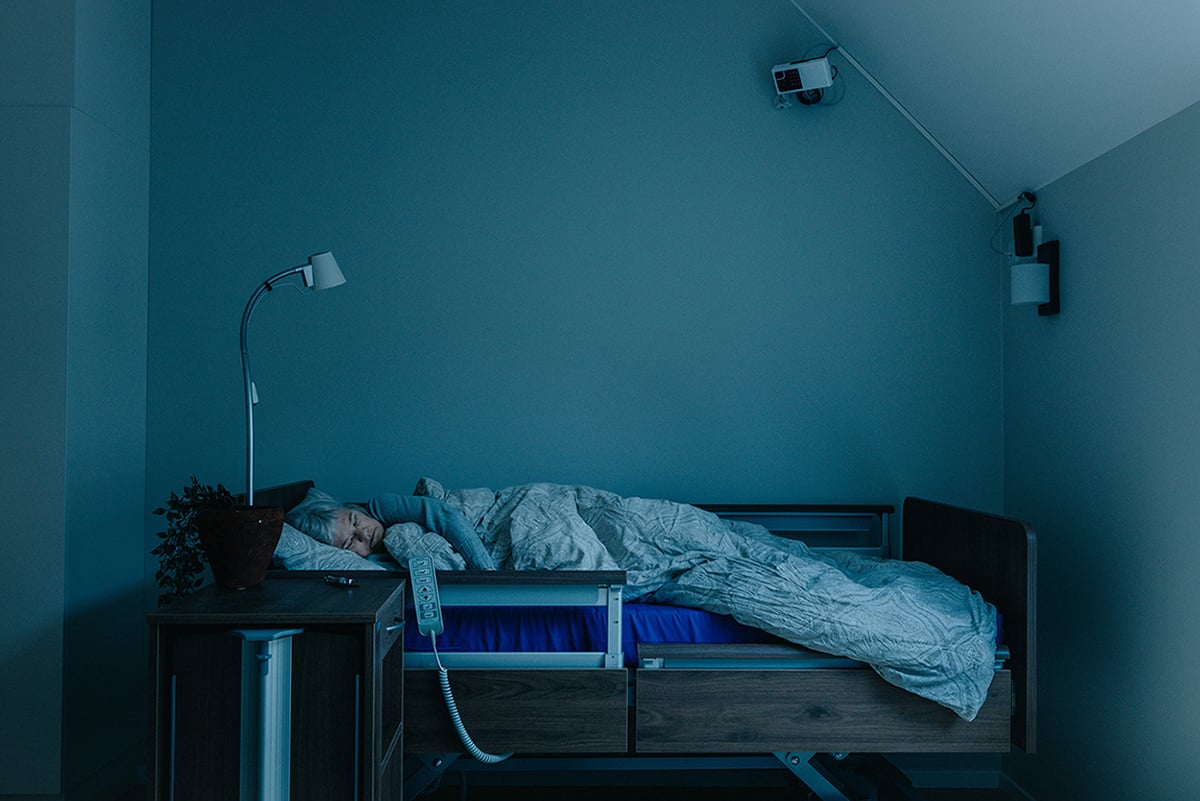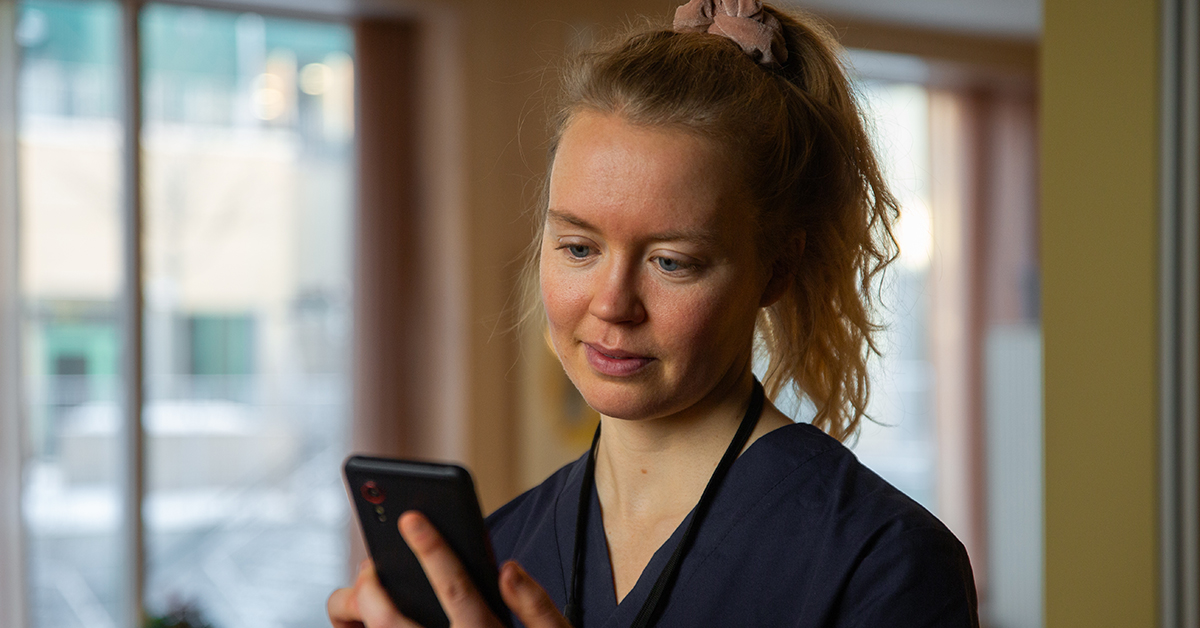Digital supervision for both the elderly and those living with dementia has many benefits for patients, residents, care teams and relatives. These are the five most significant.
A simple definition of digital supervision is «the monitoring or follow-up of patients or residents using technology and digital solutions». In contrast to physical supervision, where a person is present with the patient or resident.

Digital supervision means that care teams can monitor and ensure both the health and safety of residents/patients without being physically present – regardless of whether they are in a care home or receiving care services at home. Using advanced sensors and smart alerts, care teams can detect and respond to situations such as falls, unusual movement patterns or restlessness – without unnecessarily disturbing the resident.
Receive the latest news from Sensio – sign up for our newsletter
Digital supervision with RoomMate
 The market leader in sensor-based digital supervision is RoomMate (pictured). This multi-sensor is made by Sensio and is in use in over 20,000 rooms in care homes and home care in the Nordics and the UK.
The market leader in sensor-based digital supervision is RoomMate (pictured). This multi-sensor is made by Sensio and is in use in over 20,000 rooms in care homes and home care in the Nordics and the UK.
The primary function of RoomMate is digital supervision. Predefined alarms are triggered when the sensor detects any unusual activity, for example, when a fall might occur or has occurred, a resident is active in the room, they get out of bed or are in bed for too long. RoomMate is then used to transmit anonymised images/grayscale images and/or audio and video via mobile or the nurse’s station to allow care teams to determine whether a patient or resident needs physical assistance.
 – With an aging population and an increasing number of those living with dementia, combined with a shortage of qualified healthcare workers, a digital transformation and modernisation of elderly care is necessary. Digital supervision plays a central role here, says Product Director Jon Slorer (pictured) at Sensio.
– With an aging population and an increasing number of those living with dementia, combined with a shortage of qualified healthcare workers, a digital transformation and modernisation of elderly care is necessary. Digital supervision plays a central role here, says Product Director Jon Slorer (pictured) at Sensio.
5 benefits of digital supervision
Digital supervision for the elderly and those living with dementia has many benefits for patients, residents, care teams and relatives.
- Increased safety and security.
Digital supervision provides reassurance to residents and their families, knowing any potential risks are flagged and actioned proactively and that falls can be prevented, not just detected. Digital supervision also allows for better resource allocation and management of care teams’ time, resulting in lower stress levels and a positive impact on well-being over time.
For relatives, it is an extra measure of security to know that their loved one is under continuous supervision, without always having an employee physically present.

- More time for care.
Digital checks and the «digital first» work method allow care teams to build a true picture of residents’/patients’ needs. Care teams can use data as evidence to help guide decisions around care support and prioritization. Care teams can spend less time on routine manual checks and more time can be given to enriching the lives of their residents. Thus providing a more efficient use of resources and allowing more time for truly person-centred care.
-
Better rest at night and increased dignity.
As we know, sleep quality can have a direct impact on recovery and well-being – and routine manual checks from care teams can often result in disturbing a resident unnecessarily. With digital safety monitoring we can reduce the number of nighttime visits and only enter a room when an alert has required teams to do so. For residents and patients they experience better sleep, more independence and greater dignity.

Photo: Morten Munthe.
- More person-centred care.
Sensor-based care and digital supervision provide care teams with invaluable insight into resident behaviour and the effects of various treatment interventions. This insight facilitates more personalised care, as seen with award-winning e-health solution Sensio Insight. Person-centred care is about seeing each resident as a unique individual with their own unique care needs.
Read more: This is how Skedsmotun enhances elderly care with Sensio Insight
- Big economic benefits for the local authorities.
The use of digital supervision gives major economic benefits for local authorities, according to a study in Norway. A report from KS and Oslo Economics shows that digital supervision is estimated to lead to a total annual savings of NOK 1.1 billion for Norwegian local authorities. These benefits come mainly from the fact that digital supervision makes it possible to move from routine-based to event-based supervision, which implies better prioritisation of resources. The report also concludes that the widespread introduction of care technology, and in particular digital supervision, has significantly greater potential in the years ahead.
Summary
The introduction of care technology and the use of digital supervision and the digital first work method are clearly part of the solution to the challenges in elderly care.
Digital supervision is already well-proven and provides both increased quality, safety and more efficient use of resources in elderly care. With solutions such as RoomMate, residents gain more peace and dignity, relatives greater safety and care teams more time to provide care where it is needed most. The report from Norway documents that technology not only provides human benefits, but also major financial benefits that can be reinvested in the health service.
Experience from local authorities in both the Nordics and the UK shows that digital supervision is already making a difference, and with sensors and event-based working methods, a more sustainable health system is created that can meet demographic developments with safety and quality. Digital supervision is therefore not just about technology, but about providing better care in a smarter and more dignified way.

